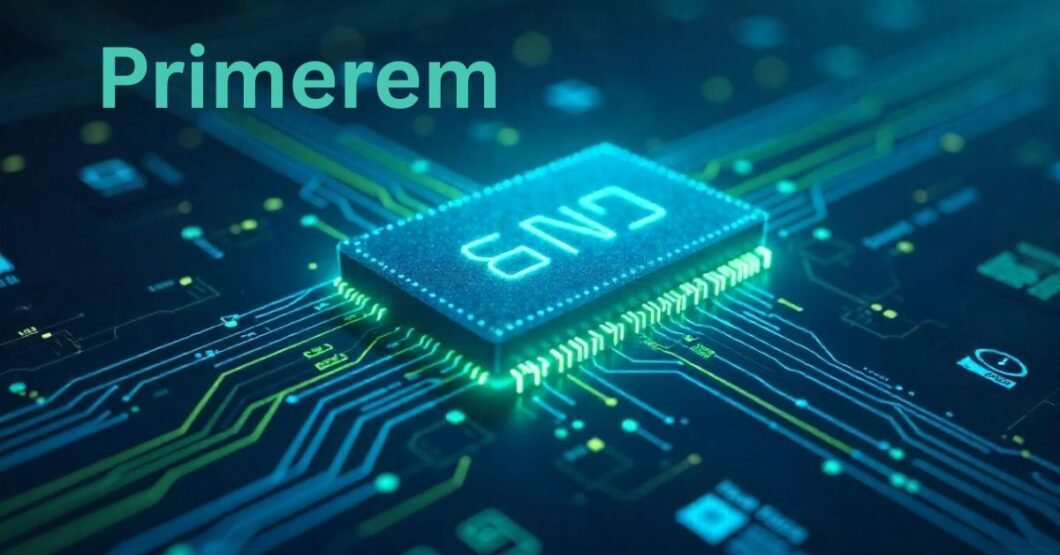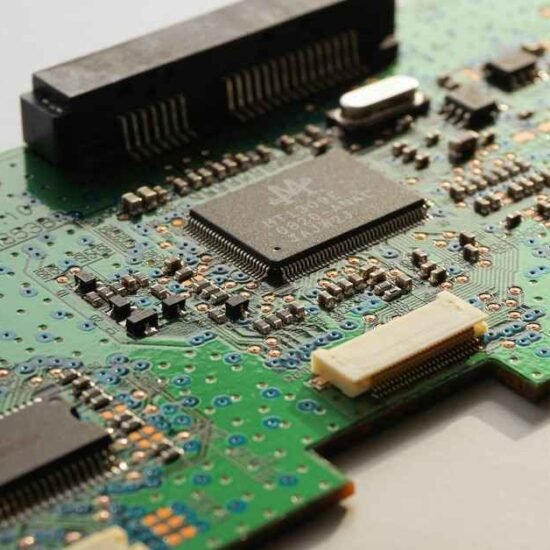Introduction
The majority of system slowness, device inefficiency, and resource waste are increasingly caused by memory management, not only CPU or GPU speed, in today’s rapidly changing digital environment. Presenting Primerem, a state-of-the-art smart memory management system that is gaining popularity in 2025 due to its AI-powered optimization of cache distribution, background process handling, and RAM deployment.
From cloud centers to smartphones, it offers a self-learning, real-time approach to memory balancing, latency reduction, system bloat prevention, and multitasking effectiveness. It’s being included in enterprise systems, where scalability and productivity are crucial, as well as consumer gadgets.
We explain how Primerem functions, who it is intended for, and how it is transforming the intelligent memory management of contemporary software ecosystems in this comprehensive guide.
What Is Primerem? A Technical Primer
Primerem is a software and API-layered intelligent memory management framework that maximizes RAM and cache utilization on all kinds of devices, from mobile systems to massive data servers.
Important Features:
- Real-time system analytics for memory allocation prediction
- AI-driven management of background processes
- Adaptability between platforms (Android, iOS, Linux, Cloud)
- Optimizing L1–L3 cache for workloads requiring high performance
In contrast to static memory systems that depend on transitory cache flushes or brute-force RAM clearing applications, it ranks memory users, examines patterns, and intelligently releases or reallocates memory in advance.
How Primerem Revolutionizes Memory Management
Conventional memory structures are reactive. They freeze screens, impede multitasking, or crash apps when memory is full. Being proactive, Primerem anticipates when memory resources will need to be released before bottlenecks arise.
Principal Advantages of Primerem:
- Increased responsiveness and system uptime
- Reduce heat burden by avoiding thrashing in the background.
- Improved performance when gaming and multitasking
- Optimized memory utilization results in less battery depletion.
Table: Traditional Memory vs Primerem Technology
| Feature | Traditional Method | Primerem System |
| Memory Allocation | Static | Adaptive AI |
| Cache Cleaning | Manual/delayed | Predictive |
| User Control Required | High | Minimal |
| Battery Drain Rate | Higher | Lower |
Core Technologies Powering Primerem
It’s tech foundation consists of five essential components:
Artificial Intelligence Algorithms
- Monitor RAM utilization continuously by workload context, user session, and app kind.
Protocol for Process Aging (PAP).
- releases the least-used apps by scoring background apps according to a decay formula.
Neural Engine for Memory (MNE)
- Self-learning AI that modifies memory maps based on past device usage
Layer of App Prediction
- Apps are launched in a “ready state” with memory segmentation partially preloaded.
Layer of Power-Aware Optimization
- Adjusts memory approach based on power modes, thermals, and batteries.
Together, these fundamental technologies simulate how a human may manually improve their equipment, but they do it more quickly, intelligently, and around the clock.
Primerem vs. Traditional Memory Managers
How does Primerem stack up against the built-in Windows RAM allocation protocol or Android’s memory manager?
Chart: Primerem vs OS Default Systems
| Attribute | Android Memory Manager | iOS RAM Handling | Primerem |
| Real-time AI Optimization | ❌ Not Available | ❌ Rule-Based | ✅ Yes |
| Predicts App Needs | ❌ No | ❌ No | ✅ Yes |
| Battery Intelligence | ✅ Partial | ✅ Partial | ✅ Full |
| User Customization | Limited | None | Advanced |
It adds features that most contemporary mobile operating systems do not by default, such as cross-app memory budgeting, cloud sync optimization, and personalization. It does not replace system-level memory tools; rather, it improves them.
Integration with Operating Systems and Devices
For developers and OEMs looking to incorporate Primerem into their current products, the company provides APIs and SDKs. Early adopters by 2025 consist of:
- Manufacturers of smartphones (OnePlus, Samsung)
- IoT home systems and smart televisions
- Laptops used for gaming with a lot of RAM
- Linux distributions tailored for business purposes
Developer Access:
- Launch the Linux Kernel 5.15+ with Android SDK
- For safe experimentation, sandbox mode is included.
- The dashboard allows for real-time memory use monitoring.
In internal beta tests, devices running Primerem showed 23% faster app switching and over 40% less “cold app” lag.
AI and ML in Primerem: Self-Optimizing Environments
It’s machine learning layer is its primary differentiator.
How It Operates:
- monitors user behavior over time.
- keeps anonymous memory patterns in storage.
- trains its model according to user persona and device type.
- Retrains continuously without sacrificing the integrity of user data
No “clean RAM” software can match Primerem’s unique performance per user while maintaining privacy with on-device federated learning.
Use Cases in Consumer Electronics (Phones, PCs)
It is assisting customers in making the most of their gadgets, particularly those that have:
- Configurations with 4GB to 8GB of RAM where trash cache accumulates rapidly
- Chromebooks or low-end cellphones
- Students balancing productivity applications
- Gamers use gadgets for demanding GPU and RAM workloads.
Example Use Cases:
| User Type | Issue | Primerem Benefit |
| College student | Lag during multitasking | 30–45% smoother transitions |
| Teen gamer | Game resets in background | RAM reallocation efficiency |
| Elderly users | Confused by battery-draining apps | Auto-optimization |
Primerem in Enterprise & Cloud Environments
It has enterprise versions that work with:
- environments that are virtualized (VMware, Hyper-V)
- instances that are cloud-native (AWS, Google Cloud, Oracle)
- Thin clients based on ARM (business kiosks, school tablets)
It can decrease memory waste by:
- Reduce the cost of servers per compute unit.
- Avoid memory leaks that cause runtime crashes.
- Reduce the time it takes to boot and reload in containerized environments
Data indicates that businesses that use memory-aware frameworks on a large scale have a 14–21% decrease in total cost of ownership (TCO).
Security and Data Integrity Considerations
The way they handle data is a major user concern. Privacy red flags are frequently raised by smart memory techniques.
The design of Primerem comprises
- No online harassment without consent
- Only device administrators can view encrypted local logs.
- divides session analysis into measures that cannot be identified.
- Cloud-free federated learning without payloads
Quarterly security audits are conducted, and open access audit trails are provided to enterprise clients.
Future Potential and What’s Coming Next
In 2026, It will include new features such as
- Cloud memory lockers: synchronize RAM footprints across fleets of devices
- Cache pathways powered by neurons to dynamically map memory on shared-RAM devices GPU
- IoT optimization for e-cars, home routers, and wearable technology
As memory becomes a crucial performance battleground across edge and cloud devices, expect to see licenses by operating systems as well as OEMs.
Frequently Asked Questions
Is Primerem software or a real chip?
Software technology, however, is most effective on systems that have been firmware-hardened.
Is Primerem compatible with iPhones?
limited support because external memory managers are not supported by iOS.
Is it possible for consumers to manually adjust Primerem settings?
Yes, it provides sysadmin and power user dashboards with toggles.
Does it gather personal information?
No. It makes use of anonymized behavioral models and on-device AI.
What is the price of Primerem?
Enterprise solutions are subscription-based, while consumer editions are either free or included in bundles.
Conclusion
Technologies like Primerem are at the forefront of guaranteeing more seamless and intelligent computing experiences as digital ecosystems grow more resource-intensive and people expect optimal performance on smaller or older devices.
By combining scalable architecture, adaptive algorithms, and real-time AI, It quietly revolutionizes memory management, enhancing user experience and speed.




